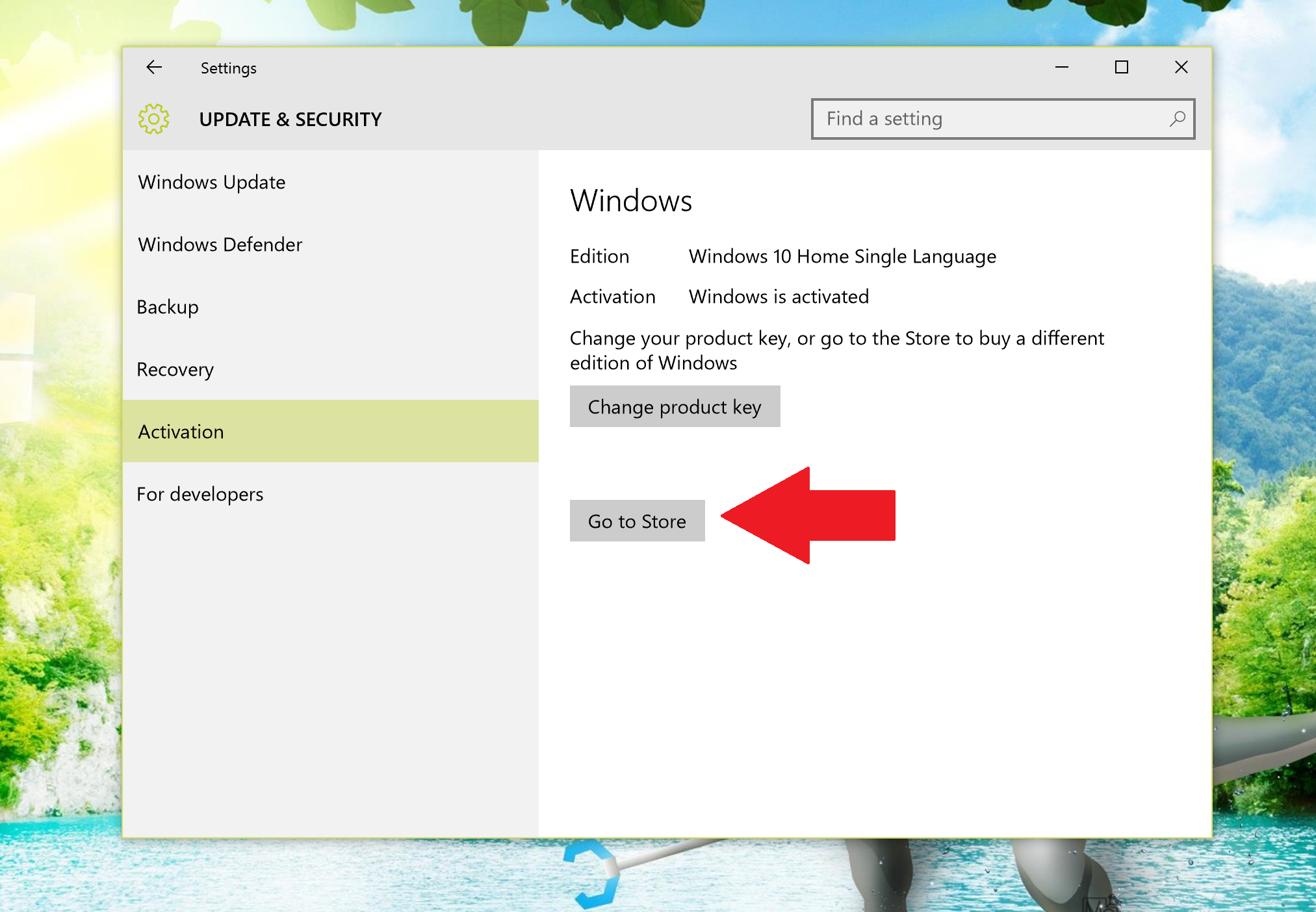Upgrading to Windows 10 opens the door to a world of enhanced features and improved security, making the **Windows 10 upgrade** a must for many users. Microsoft offers a **free Windows 10 upgrade** for those with genuine copies of Windows 7 and 8.1, providing an accessible pathway to the latest in operating system technology. As a key focus of Microsoft, the **Windows 10 supported lifetime** is designed to ensure that devices receive important updates during their functional years. It’s important to note that **Windows 10 Business updates** can vary significantly from those available to **Windows 10 Home edition**, reflecting different user needs. With recent clarifications from Microsoft regarding the duration of free upgrades, it’s crucial for users to understand the implications for their devices and future support.
Transitioning to the latest operating system is essential for both home and business users, and the upgrade to Microsoft’s latest version promises significant improvements. The notion of a free upgrade to their innovative platform allows anyone using older versions of Windows to seamlessly shift to an enhanced computing experience. Understanding the concept of device lifetime support is critical, as it pertains to how long users can expect to receive software updates and security patches. Additionally, different offerings, such as the premium updates for business users compared to those available for home users, highlight the versatile options within this OS. By staying informed about these updates, users can effectively navigate their computing landscape.
Understanding the Windows 10 Upgrade Process
The Windows 10 upgrade process has become a topic of great interest among users with devices running older versions of Windows. Microsoft launched this initiative primarily to encourage legitimate users of Windows 7 and 8.1 to switch to the newer operating system at no cost. This free Windows 10 upgrade offer helped Microsoft in its ambitious goal to unify its user base under a single platform while providing security and feature enhancements that the company deemed essential. Users could initiate the upgrade from the Windows Update section, ensuring a smooth transition to the latest Windows version.
However, it is imperative for users to understand the implications of the upgrade. The offer is not indefinite; Microsoft has clarified that free upgrades will only last for a supported lifetime of 2-4 years. This leaves many consumers wondering about what options would be available when the free update period expires. Users should consider not only the short-term benefits of upgrading but also the potential long-term costs associated with maintaining their operating systems.
Microsoft Windows 10 Supported Lifetime Explained
The concept of ‘supported lifetime’ in relation to Microsoft Windows 10 pertains to the duration in which Microsoft commits to providing free updates and security patches. It’s crucial to note that the supported lifetime varies based on the type of consumer. For instance, users with Windows 10 Home edition may experience a different trajectory in terms of updates compared to those using Windows 10 Business. Understanding this variance is key for businesses that rely on specific features and security measures offered in Business updates.
Microsoft’s approach aims to categorize its users effectively, ensuring that updates are tailored to their needs without compromising system performance. According to company officials, businesses will get a more extensive range of updates compared to home users. This emphasis on tailored updates underscores the importance of choosing the right version during the initial Windows 10 upgrade, as it could impact a user’s systems substantially in the long run.
Impact of Windows 10 Upgrade on Users
Upgrading to Windows 10 has had a significant impact on the productivity of users, thanks to improved interface and feature sets. From the Start Menu reintroduction to enhanced security measures, users in both the business and home environments have seen notable improvements. Moreover, Windows 10 supports a vast array of applications, providing seamless integration that enhances user experience and work efficiency. However, the shift to Windows 10 is not without challenges, especially for those accustomed to older versions of Windows.
For many users, especially businesses, the transition phase may involve a learning curve as they adapt to new features like Cortana and the new Edge browser. Additionally, understanding the hardware requirements for Windows 10 can be a factor, as some older machines may struggle to support the upgrade effectively. Therefore, before proceeding with the upgrade, it is advisable to assess hardware compatibility to ensure a smooth transition.
Navigating the Free Windows 10 Upgrade Offer
Navigating the free Windows 10 upgrade offer can be a daunting endeavor for many users. Initially presented as a generous transition, many have found that the intricacies involved can complicate the outright benefits. As consumers explore this path, they must be aware of the cutoff dates for the free upgrade period and the nuances regarding supported devices. While this transition is free for eligible users, it is essential to verify whether your current system meets the necessary criteria.
Moreover, with the knowledge that Microsoft will only support Windows 10 with free updates for a limited time, it’s crucial for users to stay informed about future developments. Being proactive about seeking updates and ensuring your system aligns with the latest requirements can help users maximize their Windows experience. Microsoft’s clarifications surrounding free upgrades emphasize the need for consumers to conduct thorough research before making such a significant change.
Choosing Between Windows 10 Home and Business Versions
When deciding between Windows 10 Home and Windows 10 Business editions, consumers must evaluate their individual needs. The Home edition is tailored for a general audience, while the Business version prioritizes features essential for productivity and security. Business users benefit from advanced management tools and enhanced security features that cater to corporate needs, making it the preferred choice for organizations aiming to safeguard their data and streamline operations.
Conversely, the Home edition suffices for casual users who do not require the exhaustive features found in Business. As such, users must assess their specific requirements and understanding the characteristics of each version to make the best choice. Whether opting for home or business, the Windows 10 upgrade represents an important step toward enhancing one’s computing experience.
Windows 10 Updates: What to Expect
Understanding what to expect from Windows 10 updates is crucial for users who seek to maintain optimal performance and security. These updates include not just fresh features but critical security patches that protect users from emerging threats. Microsoft has established a structured update schedule, ensuring that users receive new features and improvements consistently. This attention to detail in updates has been a centerpiece of Microsoft’s strategy to keep Windows 10 relevant and effective in a rapidly evolving technological landscape.
However, users should also be aware that updates can sometimes lead to compatibility issues with existing applications or hardware. Therefore, it’s wise to monitor the update notifications closely and review feedback from other users before implementing significant updates. Staying informed enables users to navigate potential challenges effectively, ensuring a seamless experience while benefiting from the security and performance improvements that Microsoft strives to deliver.
The Role of Microsoft in Windows 10’s Success
Microsoft’s role in the success of Windows 10 cannot be overstated. The firm not only developed the operating system but also initiated strategic marketing and support campaigns aimed at converting users from older systems. Their decision to offer a free upgrade has been a pivotal aspect of this strategy, as it has significantly increased the number of users on the new platform, creating a larger base for the company to provide support and development.
Moreover, Microsoft’s ongoing commitment to enhancing Windows 10 through continuous updates is a clear demonstration of their dedication to improving user experience. This dedication not only reinforces their brand loyalty but also promotes a secure environment where users are encouraged to stay current with their operating systems. Microsoft’s continuous engagement with users, alongside its proactive update policies, is a critical factor in the sustained success of Windows 10.
The Future of Windows 10 and Beyond
As we look toward the future of Windows 10, speculation about what lies ahead is already circulating among tech enthusiasts and regular users alike. With the advent of new computing paradigms and shifting consumer preferences, the future of Windows 10 rests on Microsoft’s ability to adapt and innovate. Users are particularly interested in how the company will balance the integration of new technologies with the performance and reliability that have become synonymous with the Windows brand.
Additionally, the potential for a new operating system iteration prompts questions about the support timeline for Windows 10 itself. Amidst these anticipations, Microsoft has indicated that they will continue to provide updates for Windows 10 for the foreseeable future, giving users significant peace of mind as they navigate the ever-evolving tech landscape. Ultimately, how Microsoft strategically markets and supports the transition to newer systems will dictate the long-term relevance of Windows 10.
Keeping Your Windows 10 Device Updated
Considerations for keeping your Windows 10 device updated are critical for ensuring that you have the latest features, enhancements, and security patches. Regular updates not only address potential vulnerabilities but also enhance overall system performance. Users should be proactive in checking for updates and understanding available configurations for automatic downloads to ease the process.
Staying informed about upcoming features and changes from Microsoft can empower users to make informed decisions regarding their operating systems. Furthermore, actively engaging with community forums or Microsoft’s resources can provide insights and tips for optimizing Windows 10 to suit individual needs. By developing a routine for managing updates, users can continue to enjoy a robust, secure, and dynamic computing experience.
Frequently Asked Questions
What is the free Windows 10 upgrade offer from Microsoft?
Microsoft offers a free Windows 10 upgrade to users with legitimate copies of Windows 7 and 8.1. This upgrade allows users to transition to Windows 10 without incurring costs, ensuring they have access to the latest features and security updates at no additional charge.
How long will Windows 10 receive free updates after the upgrade?
After upgrading to Windows 10, users can expect to receive free updates for a period ranging from 2 to 4 years. This duration is based on Microsoft’s clarification regarding the supported lifetime of devices running Windows 10.
Are there differences in Windows 10 updates between Home and Business editions?
Yes, there are differences in the update types and frequencies for Windows 10 Home and Windows 10 Business editions. Windows 10 Business typically receives more comprehensive updates compared to the Home version, catering to the different needs of business users.
What does ‘supported lifetime’ mean for Windows 10 users?
The ‘supported lifetime’ for Windows 10 refers to the duration in which Microsoft will provide updates and fixes for the operating system. It does not mean indefinite support, as devices will typically receive updates for a limited timeframe following the free upgrade.
Can I still upgrade to Windows 10 for free in 2023?
While the official free upgrade path may have ended, many users have reported success by using the Windows 10 Media Creation Tool to upgrade from earlier versions like Windows 7 or 8.1. It’s advisable to check Microsoft’s official website for any potential ongoing offers.
How does the device type affect Windows 10’s supported lifetime?
The supported lifetime of Windows 10 may vary based on the device type, as Microsoft categorizes support differently for regular consumers and business users. Business devices typically have a longer support duration, ensuring that enterprises receive necessary updates to maintain system security.
What should I consider before upgrading to Windows 10?
Before upgrading to Windows 10, consider your current operating system’s compatibility, your device’s specifications, and whether you are eligible for the free Windows 10 upgrade. Additionally, evaluate whether you need the features available in Windows 10 Home or Business editions.
Will my current applications still work after upgrading to Windows 10?
In most cases, applications that run on Windows 7 or 8.1 will also function on Windows 10, but it’s recommended to check compatibility for critical applications. Upgrading to Windows 10 can enhance functionality with improved features and better support.
| Key Point | Description |
|---|---|
| Supported Device Lifetime | Windows 10 will have a defined supported lifetime for updates, indicating that it won’t receive indefinite support. |
| Free Upgrade Offer | Users of Windows 7 and 8.1 can upgrade to Windows 10 for free. |
| Duration of Free Updates | Free updates will be provided for 2-4 years post-upgrade, based on device type. |
| Differentiation by Consumer Type | Business users may have different update support compared to regular users. |
| PC Manufacturer Support | PC manufacturers typically provide device updates for around 3 years, aligning with Microsoft’s upgrade policy. |
| Windows 10 Editions | Different editions (Home vs. Business) of Windows 10 will receive updates differently. |
Summary
The Windows 10 upgrade has become a significant topic among users and tech enthusiasts due to its implications on supported device lifetimes and update policies. Microsoft’s clear indication that the Windows 10 upgrade will only receive free updates for a limited period of 2-4 years raises questions about the long-term support for devices. As consumers, it’s essential to understand how these updates vary by user type and Windows edition, which can affect overall user experience. For those considering the upgrade, it’s prudent to be aware of these factors to make an informed decision.








